Wyoming County: The History of the Underground Railroad
Wyoming County played a vital role in the Underground Railroad - an escape route that took fugitive slaves from points south, through this area of Western New York, and into Canada by way of Buffalo. The locations listed were “stations” along the way where escaped slaves could hide from search parties, replenish their food and clothing, and receive directions and encouragement from sympathizers helping the fugitive slaves gain freedom. This piece is dedicated to all those brave souls who passed through this area on the way to “the promised land,” and to all those who helped them realize the dream of living as free men and women.
To get a copy of the information here, contact us to receive a FREE Wyoming County Underground Railroad Brochure!

Spirituals: Songs Related To Escaping & Freedom
A “home” was a safe place where all live free; chariots and trains, were references to the transportation methods used to escape. In the song The Gospel Train, the words, “She is coming, get on board, there’s room for many more,” was a call to escape on the train headed north. In Swing Low, Sweet Chariot, there is thought to be a coded reference to Ripley, Ohio, which was an Underground Railroad station where fugitives where welcome. Slaves needed help to reach Ripley, which sat on a hill by the Ohio River, not an easy crossing spot. The words of the spiritual describe it: “I looked over Jordan and what did I see, coming for to carry me home, a band of angels coming after me.”
Swing Low, Sweet Chariot by Etta James
The Fugitive Slave Act of 1850
The Fugitive Slave Act of 1850 permitted the recapture and extradition of escaped slaves with the assistance of federal marshals. Threatened by the apparent success of the Underground Railroad, the act levied fines and prison sentences on individuals who helped runaways. During this period, traders were known to kidnap free African Americans and sell them into slavery in the South. The Fugitive Slave Act forced more runaways to seek a new life of freedom outside of the United States - many fled to Canada, Mexico, the Caribbean and even Europe.
The Underground Railroad was known as the “Freedom Trail.”
People involved in harboring and transporting escaping slaves communicated using discrete code words:
- Conductor – a person who helped slaves on the secretive road north.
- Shepherds – people who encouraged escaped slaves.
- Agent – a person who planned escape routes for slaves.
- Station – a safe place where slaves could hide.
- Station master – a person in charge of a hiding place.
- Stockholder – a person who gave food, clothing and money to escaped slaves.
- Heaven or Promised Land – code name for Canada, final destination for the escaped slaves traveling through Wyoming County.
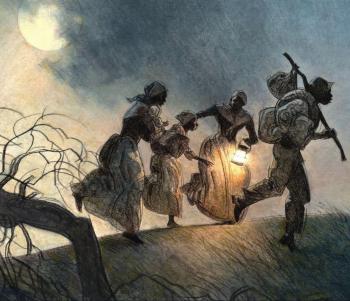
Wyoming County's Role In the Abolitionist Movement
America’s first anti-slavery political party was organized in Wyoming County at the Warsaw Presbyterian Church in 1839. Wyoming County grew to have the second largest number of conductors and station masters in New York State, after Monroe County. The Fugitive Slave Act of 1850 made it illegal to harbor or help fugitive slaves. For that reason, the events of the Underground Railroad were shrouded in secrecy.
Though many of the buildings that were involved in the railroad no longer stand, there is sufficient evidence from the records of town historians, private family letters and known publications to document the part that Wyoming County played in helping escaped slaves find freedom.
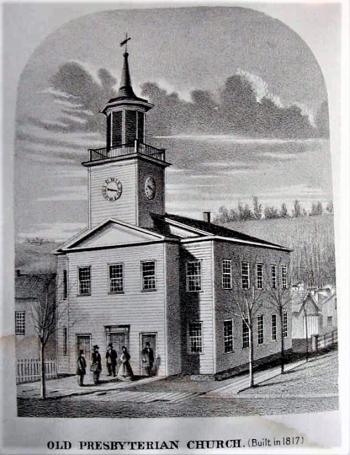
They spoke in code: a depot was a safe house, freight or packages were slaves. They built hidden boxes in wagons, trap doors in floors, false walls and tunnels in their homes and barns. The Underground Railroad followed waterways where escaped slaves could hide, sometimes using reeds to breathe under water. The watery refuge caused the hunting dogs tracking the runaways to lose the scent. Slaves learned where these waterways came out and they followed signs to point them in the right direction- sometimes the constellations in the night sky, sometimes in the patterns of quilts that were hung on fences and trees (see more on this at the end of this article!).
A play, The Woman in the Box, was the true story of a fugitive slave and her daughter who fled from Maryland to Warsaw. It was written and produced by Harvey Granite and members of the Warsaw Historical Society and performed in Warsaw over Memorial Day Weekend in 2003.
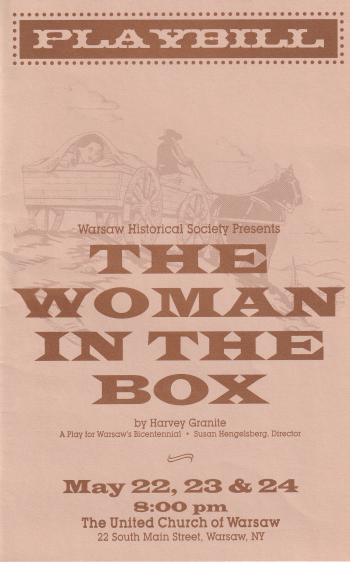
The Villages of Wyoming County: Freedom Trail Stories
The majority of sites described in the following section are not open to the public. Locations that are available will be noted, with links to information on how you can connect with them to learn more. Please respect the privacy and property of each site, as some are residential homes and businesses.
The following describes the abolitionist work, stories and other interesting historical anecdotes from the towns and villages within Wyoming County:
Arcade
Arcade was called China during the slave era. The Congregational Church was the site of two anti-slavery conventions, one in 1840 that was a follow-up to the 1839 Liberty Party convention in Warsaw, and the second (called the Grand Liberty Convention) in 1844. The GLC attracted 2,000 abolitionists. Underground Railroad conductors included Ralston W. Lyman, Samuel Tilden and Colonel Charles O. Shepard. H.N. Waldo used his woolen mill to hide fugitive slaves. Shepard became a member of the State Assembly.
In a personal letter, Harriet Beecher Stowe, author of Uncle Tom’s Cabin, the book that aroused the North against slavery, mentioned her distant cousin Mary Lyman, who lived in China, NY. Mary Lyman’s father, Reverend William Lyman, was pastor at the Congregational Church, and he and his children were abolitionists. Mary’s brother Ralston had a mercantile business in China by day. At night, he associated with his brother-in-law, and Underground Railroad conductor, Colonel Charles O. Shepard (mentioned above). They were prominent in the organization of the Liberty Party and operated a militant, well organized Underground Railway responsible for the passage of many slaves to freedom.
Attica
Conductor-farmer Matthew Eastman operated a depot three miles south of the village. In 1918 the Sondericker family purchased (and still owns) that property at 1390-1560 Exchange Street Road, now known as Friendly Acres. According to a family historian, the farm-building complex was called South Attica Depot, which may have referred to its earlier use on the Underground Railroad.
The Hugh R. Lewis home at 74 East Avenue had a hideaway in a small, bricked storeroom in the cellar. The house was razed in 1950 and a Catholic school built on the site.
Ephraim Brainard owned the property at 3979 East Main Road where he sheltered many fugitive slaves on their way to Canada, providing them replacement shoes and clothing. The original Brainard home was razed in 1939.
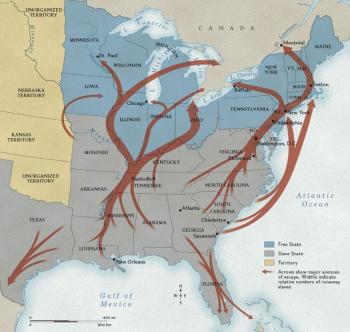
Castile
An Underground Railroad station located at the site of the old Fiske Farm, was ideally situated in that it was far back on the west side of the main highway, halfway between Castile and Perry. In 1965 Herve K. Fiske spoke of his grandfather, Truman Fiske, saying “Truman Fiske was an ardent abolitionist and a very pious man who in his prayers plead, ‘strike the shackles from the slave and set the captive free.’” As a youngster, Herve himself heard Tom Burns, a barber in Perry, speak of the “good meetings” that were held at the Fiske home. Truman Fiske’s neighbor was a Mr. Tallman, an ardent Southern sympathizer. Herve’s father and friends on a late-night prank once stuck a Confederate flag in Tallman’s tree.
Covington
An important Underground Railroad link between Wyoming County and Genesee County was known as the “Covington Connection.” Here, in the northeastern corner of Wyoming County, just east of the Oatka River (as the Oatka Creek was called then), in the little village of Pearl Creek (on Route 19), was the vital station-home of Hugh Brooks.
“Brooksholm” in Covington Township, was started by pioneer settler Benedict Brooks, a founder of the Middlebury Academy who served as a judge and state legislator. His son, Hugh, was an avid abolitionist and the family home became known as the Covington Route. This route led slaves via the east side of the Oatka, to Pavilion, to LeRoy along the present Bernd Road, then to the junction of Route 5 and Keeney Road where conductor Daniel McDonald lived.
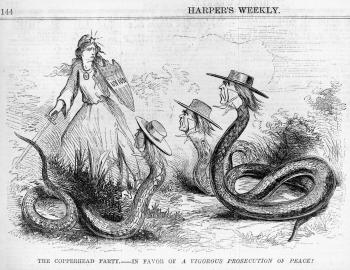
Java
During the fugitive slave era, the township was known as Peking. Here lived a contingent of “copperheads”- a term used for persons in the northern states who sympathized with the South during the Civil War. These citizens believed in the letter of the law (in this case the Fugitive Slave Act) and opposed the Underground Railroad. They feared that freeing slaves would cut into the labor market. Many didn’t believe in slavery, yet did not think it was important enough to get involved. To them, slavery was a Southern problem.
Middlebury
Frederick Douglass was a former slave and famed social reformer, abolitionist, orator, writer, and statesman. He also became publisher of the abolitionist newspaper, the North Star, in Rochester, NY in 1847.
Douglass was scheduled to lecture on the subject of slavery at the Presbyterian Church in the Middlebury village of Wyoming, but never did. It is not known why the church then denied Douglass the pulpit, but State Judge James Ferris, owner of a new house across the street from the church, invited Douglass to stand on the steps of his house to speak. Douglass addressed several hundred people gathered on the lawn before him at 6 North Academy Street.
“The only true remedy for the extension of slavery, is the immediate abolition of slavery.” ~ Frederick Douglass
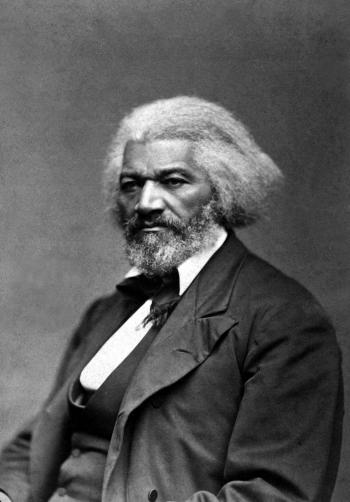
Perry
It was here that Warsaw resident Myron Holley, a member of the Western New York Anti-Slavery Society, became an anti-slavery lecturer through his speech in Perry on July 4, 1839.
On the night of April 23, 1861, there was a great mass meeting in Perry to consider the state of the Country. The next day, flags bearing the Stars and Stripes hung everywhere as volunteers left for Buffalo to join the fight to preserve the Union. Perry was more largely represented in "the Rebellion," as the Civil War was often called, than any other town in Wyoming County.
The American Citizen was a newspaper established in 1836 under the auspices of the Genesee County Anti-Slavery Society, as the voice of that Society, and as an advocate of the general abolition of slavery. A.W. Young was chosen as editor, and remained in that position the first three months. Jonathan A. Hadley was employed as publisher, and continued as such to the end of the first year. The newspaper then moved from Warsaw to Perry, chiefly for the convenience of its new editor Josiah Andrews, who resided in Perry. Andrews was instrumental in furthering the cause of anti-slavery and the Underground Railroad. According to historical writer Frank Roberts, author of The History of Perry, Josiah Andrews was "an earnest foe of the evil and for a time was connected with the Underground Railroad and assisted slaves in escaping pursuit". The Citizen's publishers in Perry were, for a time, Mitchell and Warren. Mr. Mitchell continued its publication until January, 1841, when it was moved to Rochester.
The Presbyterian Church of Perry was believed to have been a depot involving mill owner Samuel F. Phenix, pharmacist Willard J. Chapin, Baptist minister Elon Galusha, mill owner George Tomlinson, and Seth Ames in its operations. Under Rev. Galusha, the Baptist church took a stand against slavery and the members resolved that as a church of Christ they could not fellowship with slave holders or their supporters.
Pike
If caught helping in any way, conductors were arrested, imprisoned and fined as much as one-thousand dollars for each instance or each fugitive. There were sizable bounties on the fugitives and their helpers. Pike native Calvin Fairbank had a successful career aiding escaped slaves though he was caught twice and served seventeen years in a Kentucky prison
Born in Pike in 1816, Calvin Fairbank was a ministerial student at Oberlin College in Elmira when his father sent him down the Ohio River in charge of a lumber raft. Just below Wheeling, Fairbank helped his first slave cross the river and started him on the road to freedom. Within days, while moored to the Kentucky shore of the Ohio, Fairbank aided the escape of an old slave woman and her seven children. Seven years later, after helping Louis Hayden and his family escape from Lexington, Kentucky to Ohio, Fairbank was arrested, pleaded guilty and jailed.
Governor John J. Crittenden pardoned Fairbank in 1849. He resumed his conducting for two more years until he was again arrested in Indiana. He received a second term of 15 years in prison where he was whipped for "alleged breaches of discipline." President Lincoln got word to Richard T. Jacob on his first day in office as acting-Governor of Kentucky that Fairbank should be released and pardoned. The man from Pike knelt down and kissed the ground on his first day of freedom. In all, he guided 47 slaves to freedom. He preached in Washington, D.C. in the spring of 1865 where President Lincoln is said to have been among those listening to his sermon.
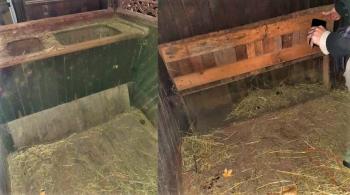
Sheldon
Theophilus Humphrey and his wife Cynthia (Hayden) Humphrey, came to the hamlet of Strykersville from Canton, Connecticut in 1818. The Humphreys and their 17 children occupied what became known as Humphrey's Hollow. Sixteen of the children grew to maturity and assisted Humphrey in farming, tanning, shoe and harness making. During the Civil War, Humphrey's Hollow was a depot between the Warsaw home of Seth Gates and Colonel Arden Woodruff’s home in Strykersville. Theophilus was a deacon of the Congregational Church. After his wife’s death in 1836, Mr. Humphrey remarried and lived until 1851 when he died at age 75. Both Cynthia and Theophilus are interred in the Humphrey's Hollow Cemetery near the homestead.
Colonel Arden Woodruff’s home was located on what was then Buffalo Road (currently Route 78, near the Red Apple gas station). The land was deeded to Colonel Woodruff in return for his military service. The original home was used as a woodshed, then expanded so that it is now part of the home and farm of Dan Hyman. The Humphrey family married into the Gates family through Chauncey Gates (brother of Seth) whose house on Genesee Street (torn down) was also reputed to be an Underground Railroad stop.
Warsaw
Warsaw formed an anti-slavery society early in 1833 and seven station-masters lived in Warsaw. In the spring of 1836, The American Citizen newspaper was established in Warsaw under the auspices of the Genesee County Anti-Slavery Society. Involved were residents Andrew W. Young, editor, and Jonathan A. Hadley, publisher to the end of the first year. The politics that elected Abraham Lincoln as the 16th president of the United States started in Warsaw on November 13, 1839. Warsaw was also the birthplace of the Liberty Party.
This party was the ancestor of the Republican Party and the first to have African-Americans on its executive board. It was also the first party in American history to advocate that the abolition of slavery become the law of the land. Abolitionists met that November night at the Presbyterian Church (site of the current United Church of Warsaw) and nominated the first anti-slavery candidate for president, a southerner and former slave holder, James G. Birney. Warsaw reached national prominence in the abolitionist movement (1833-1856). It had a population of only 1200 citizens, a resident ex-Congressman in Seth Gates, and the area's first Republican Representative, the Honorable Augustus Frank, son of abolitionist, Dr. Augustus Frank.
The Seth Gates House at 15 Perry Avenue, Warsaw, is currently the headquarters and museum of the Warsaw Historical Society. Seth Gates' place in American history as a U.S. Representative in the 1830's was secured when he took the first direct action in Congress to halt the spread of slavery by petitioning to prevent the entrance of Texas into the Union. A Savannah planter in 1840 put a price of $500, dead or alive, on Gates' head after he mailed to his constituents the proceedings of the World Anti-Slavery Convention in 1840, defying a House gag order forbidding members to even mention slavery on the floor of the House of Representatives.
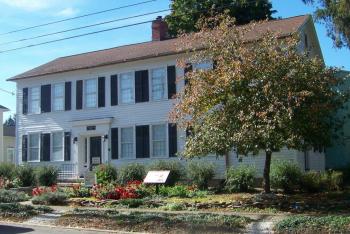
The Augustus Frank House at 140 North Main Street in Warsaw, was the home of the first Republican congressman elected from Warsaw in 1856. Frank is credited with sponsorship of the 13th Amendment to the U.S. Constitution ending slavery in the U.S. and served as floor manager of its passage through the House of Representatives. In the early 1960's, the Frank home became the home and law office of attorney Charlotte Smallwood-Cook, the first woman district attorney in New York State. During her tenure, Ms. Smallwood-Cook successfully prosecuted the county’s first capital murder case in 40 years and argued the case before the Court of Appeals, which affirmed the verdict. The Frank & Smallwood-Cook home is now the location of the Artisan Villa, a multi-purpose retail location you can visit & explore! Ask them about the Underground Railroad history that remains here (like the secret compartment in the carriage barn!), and also the haunted spirits who continue to call this place home.
The Burghardt House in Warsaw became the home of Eliza and William Burghardt in 1866. Eliza Jones Burghardt was seven years old when she came to Warsaw in 1849. As fleeing slaves, she was hidden with her pregnant mother, Mary Jones, in the false bottom of a produce wagon during a 13-day journey from Washington, D.C. Mary Jones died after giving birth to a son. Eliza and her bother remained in hiding with separate families in Warsaw until the end of the Civil War. The children grew to be active citizens and were never denounced, though slavery continued to be legal until passage of the 13th Amendment.
The Joshua Darling House on Main Street just west of Liberty Street in Warsaw was the first brick building constructed in Warsaw. Two fugitive slave children, Eliza and William Edward Jones, were found there by a U.S. census taker in August, 1850. According to census records, their mother was working next door in the Barnett family household. Joshua Darling was the founder of the Wyoming County Bank and a business partner of Allen Breck, with whose family Eliza Jones grew up to womanhood.
The Warsaw Cemetery on Route 19 is the burial ground a mile south of the Village where the monuments of important abolitionist families, Augustus Frank, Seth Gates, Andrew Young and William and Michael Smallwood, are found. William Smallwood hid slaves in his home and nearby swamp. The name of David Clark Martin, who raised Edward, the infant fugitive born in Warsaw, is just south of the Franks' monuments.
Another interesting headstone is that of Frank Hodge, a former slave who came to Warsaw after the Civil War. Hodge became a coachman in Warsaw and was a volunteer fireman. He passed away on March 19, 1915 at the age of 70. He is buried with other Union veterans in the Grand Army of the Republic (GAR) section of the Warsaw Cemetery. His headstone reads "Born in Slavery, Died a Free Man."
The new headstone of William and Eliza Burghardt was erected through contributions and grants to the Warsaw Historical Society and unveiled in their memory in August, 2004.
The Warsaw Cemetery is open from dusk until dawn, year-round.
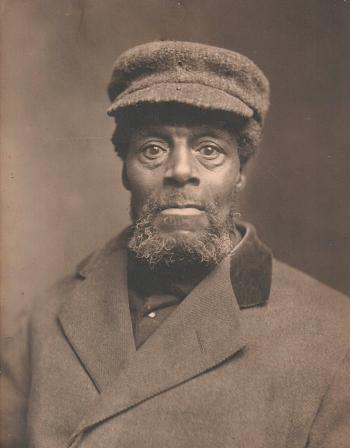
Quilt Patterns Lead the Way to Freedom
As quilts containing patterns like the ones shown below hung on fences or cabin doors to “air out,” they were actually providing runaway slaves with vital information on their path to freedom. There were primary quilt patterns used to direct the slaves to get ready to escape and also a number of secondary patterns. Each block had a specific meaning and message in the code.

Here are how runaway slaves interpreted the quilt codes:
- Monkey Wrench– Gather the tools you need to navigate, build shelter and/or defend yourself.
- Bear’s Paw – Take the mountain trails and follow the path of bears to get to water and food.
- Crossroads – Represented Cleveland Ohio, where many routes led to freedom.
- Log Cabin – This is a safe house.
- Bow Ties – Dress the part - change out of your slave clothes to dress as a freed man.
- Flying Geese – Go in Spring and follow the geese North.
- North Star – Follow the North Star.
- Tumbling Boxes – Pack up and get ready to go.
“The monkey wrench turns the wagon wheel toward Canada on a bear’s paw trail to the crossroads. Once they got to the crossroads, they dug a log cabin on the ground. Shoofly told them to dress up in cotton and satin bow ties, go to the cathedral church, get married and exchange double wedding rings. Flying geese stay on the drunkard’s path and follow the stars.” ~ as remembered by Ozella McDaniel Williams, South Carolina.
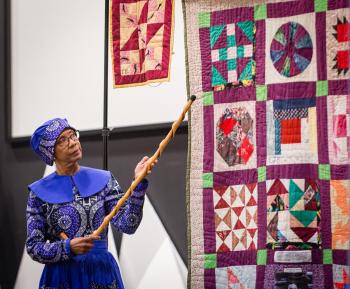
Abolitionist Timeline Of Events:
1619 - First recorded Africans in the North American Colonies are brought to Jamestown, VA as indentured servants.
1641 - Colony of Massachusetts Bay legalizes slavery.
1660 - Virginia legalizes slavery.
1712 - Pennsylvania passes the first legislation to prevent the importation of slaves.
1770 - Crispus Atticus, a former slave, is the first person killed during the Boston Massacre.
1777 - Vermont is the first state to abolish slavery.
1787 - Slavery is banned in the territory north of the Ohio River.
1793 - The U.S. Congress enacts the Fugitive Slave Act to protect the rights of slave owners for retrieving runaways. Eli Whitney invents the cotton gin; the demand for slavery in the South increases.
1799 - New York passes the Gradual Emancipation Bill. Children born after July 4, 1799 would be deemed free, however, they would be indentured for 25-27 years to the enslaver of the mother.
1803 - Haitians achieve independence from France after a 13-year rebellion and abolish slavery.
1807 - The United States Congress prohibits the importation of slaves.
1816 - Calvin Fairbank, is born in Pike, NY. He begins his life mission in 1837 to help slaves escape across the Ohio River to freedom until his arrest in 1851. He was released from prison in 1864 and lived out his life in our neighboring county of Allegany.
1817 - New York Legislature passes the Abolition Act on March 31, abolishing slavery effective July 4, 1827.
1820 - Speaker of the House, Henry Clay, arranges the Missouri Compromise drawing a line westward from the southern boundary of Missouri. Slavery was prohibited north of this line.
1834 - The congregation of the Presbyterian Church of Warsaw, NY passes resolutions condemning slavery and commending efforts of abolition.
1836 - The American Citizen, an anti-slavery newspaper, is first published in Warsaw, NY.
1837 - The American Citizen newspaper moves to Perry, NY until 1841 when it moves to Rochester, NY.
1837 - The second annual Genesee County Anti-Slavery Society meeting is held in Attica, NY.
1839 - The Liberty Party, predecessor to the Free Soil and Republican Parties, are born at the Presbyterian Church in Warsaw, NY.
1840 - Elon Galusha, Perry Baptist Minister, serves as president of the American Baptist Anti-Slavery Convention held in NYC and represented the American Anti-Slavery Society at the London Convention that year.
1847 - Frederick Douglass lectures in the Middlebury village of Wyoming, NY.
1850 - The Fugitive Slave Law is signed by President Millard Fillmore. Heavy fines and imprisonment are prescribed for persons helping runaway slaves. There is no record of any one in Warsaw being denounced under provisions of this law.
1850 - Escaping slavery, a pregnant Mary Douglas Jones and her young daughter escape north to Wyoming County secreted away in a box on a 21-day wagon ride. They were hidden upon arrival with the aid of local stationmasters and settled in Warsaw, NY.
1854 - The Kansas Nebraska Act is passed repealing the Missouri Compromise. New territories, Kansas and Nebraska are allowed to decide if they want slavery.
1860 - Abraham Lincoln who holds a moderate anti-slavery platform, is elected president.
1861 - Confederate troops attack Fort Sumter. The Civil War has begun.
1861 - The Wyoming County Mirror announced a "Patriot's Rally!" held on the steps of the county courthouse in Warsaw, NY to raise support, funds and volunteers to fight in the Union Army.
1863 - President Lincoln signs the Emancipation Proclamation abolishing slavery in the Confederate States.
1865 - Congressmen Augustus Frank from Warsaw, NY and James M. Ashley of Ohio are credited by newspapers with securing passage of the 13th Amendment, abolishing slavery in America.
1865 - Congress passes the 13th Amendment abolishing slavery.



